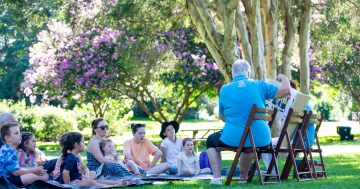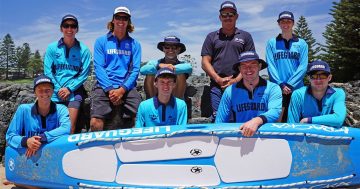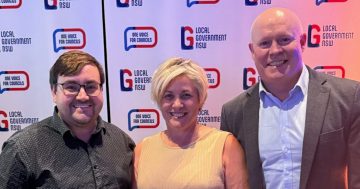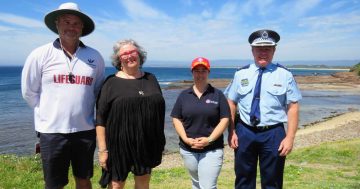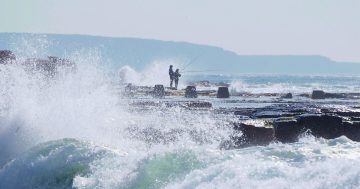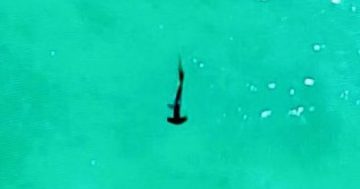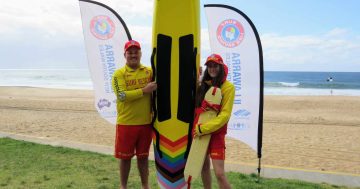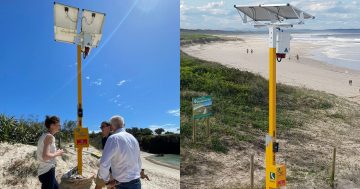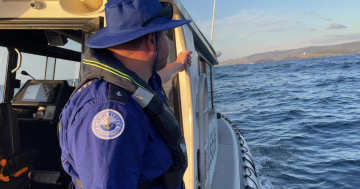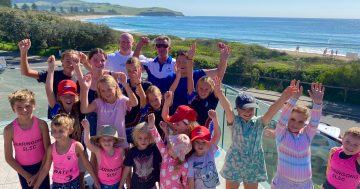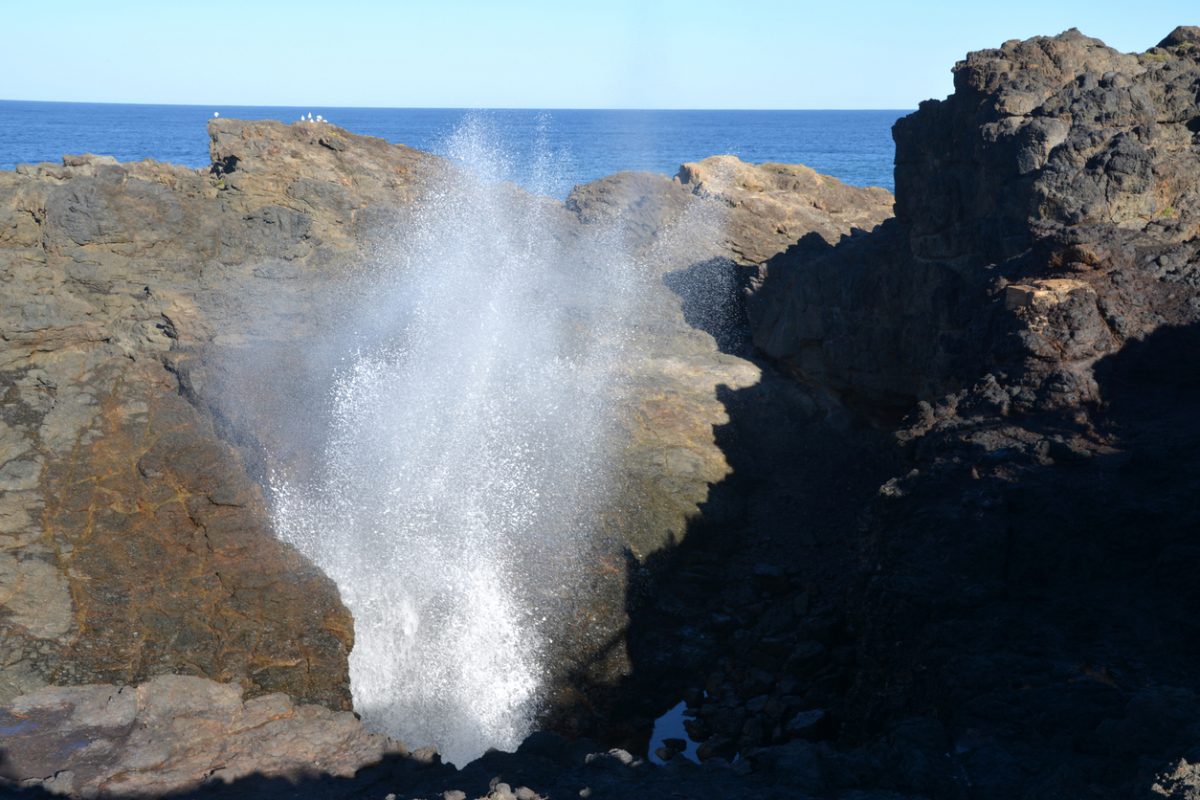
Kiama Blowhole and Little Bay have been identified as key locations for a rock fishing surveillance trial. Photo: File.
High-risk rock fishing hotspots in Kiama will be targeted for a trial program which uses AI technology and remote surveillance to improve safety and reduce the number of fatal incidents.
Kiama is one of the most prevalent locations for rock fishing incidents and fatalities along the NSW coast.
There have been 11 deaths linked to rock fishing in the local government area in the past 15 years – the most recent less than 12 months ago when there was a double fatality of a father and son at Kiama Blowhole.
There have been several near-miss incidents in the past six months which were attended by lifesavers and lifeguards.
Surf Life Saving NSW (SLSNSW) is hoping technology could provide an extra level of protection and prevent further tragedies.
The SLSNSW Rock Fishing Remote Surveillance Project will be implemented at Kiama Blowhole and Little Bay to better monitor the rock shelves where fishing activity is known to take place.
“Remote surveillance and supervision cameras will be placed on two sites on our rock platforms,” Kiama Mayor Cameron McDonald said. “Those will essentially connect to an AI source which will monitor how many people are standing on the rocks at any one time and if that number changes in an instant it will send back to base so there is notification that there is some sort of issue.
“The centre is going to be managed 24 hours, seven days a week, so that operators can activate emergency responses such as lifeguards, lifesavers, Police Rescue, ambulance or rescue helicopters if there’s a change in what the cameras are sensing is the number of people on the rock platform.”
During the trial, surveillance will only be undertaken during daylight hours, but will include low light periods of the day.
The proof-of-concept trial is set to run for about 14 months at each site, and if deemed successful, SLSNSW would look at government funding opportunities to provide it at a greater number of sites.
“We won’t know the outcome of the benefit of the technology until the results of that trial are assessed, but anything that we can do to try and reduce fatalities is really important,” Mayor McDonald said.
The trial is one of many steps Kiama Municipal Council is taking to better protect residents and visitors enjoying the coastline, with educational opportunities to promote safer behaviours around water also being explored.
The council has accepted hosting a Gone Fishing Rock Fishing Safety Skills Workshop in November which is targeted at people from non-English speaking backgrounds and those interested in fishing but with limited experience.
The event will cover topics such as safety equipment and fitting a life jacket and how to fish better.
“Education is an important piece of the puzzle and that can’t just be council, it has to be higher levels of government, Surf Life Saving NSW and our other bodies to really take that on and make sure that people who aren’t necessarily aware of things that can go wrong on our coastal fringe are educated,” Mayor McDonald said.
Councillors also voted in February to contact Illawarra Shoalhaven Joint Organisation, Western Sydney Regional Organisation of Councils (WSROC), and SLS NSW South Coast Branch president Shane Wicks regarding beach safety awareness, which included support for a surf awareness and education campaign targeting the communities of southwestern and western Sydney.
Councillor Imogen Draisma said it was “great to see” action being taken by SLSNSW to help improve safety around rock fishing, but reiterated the importance of Kiama being classified as a high-risk area, which was first raised at council a number of years ago.
“We have been having ongoing conversations with NSW Police and Fisheries on that request to be designated high risk,” Planning, Environment and Communities Director Ed Paterson responded.
“We are just working with the regulatory authorities on that process and what it means and what assistance and the ability particularly for police to respond.”
More information about the Rock Fishing Surveillance Program is expected to be released by Surf Life Saving NSW in the coming weeks.








